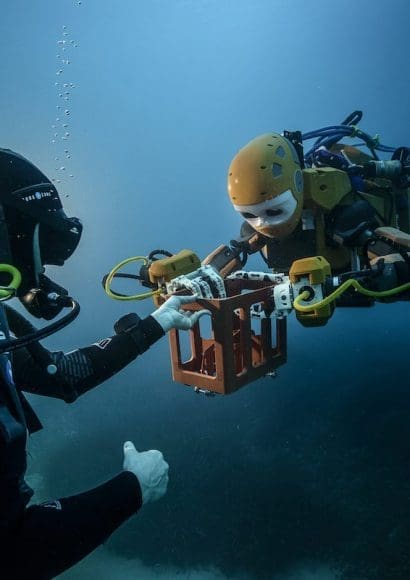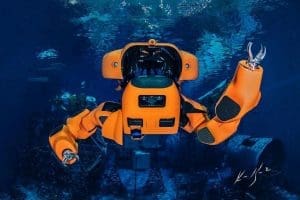
The fascinating realm of underwater robotics research is redefining our understanding of the oceans. These advanced machines are more than mere tools—they are pioneers, uncovering mysteries hidden beneath the waves. This article delves into the innovations, applications, and challenges of underwater robotics, offering a glimpse into this transformative field.
Contents
The Rise of Underwater Robotics Researc🐟
Underwater robotics research has grown exponentially in recent years. Thanks to advancements in technology, researchers now develop robots capable of navigating the extreme conditions of the ocean. But how did it all begin?
The Historical Context of Underwater Robotics
The journey of underwater robotics began decades ago, driven by the need for exploration. Early innovations focused on creating submersibles for oceanic studies. However, limited technology restricted their range and efficiency.
With time, breakthroughs like hydrodynamic designs, enhanced battery life, and autonomous programming revolutionized the field. These advancements have pushed the boundaries of underwater exploration.
Why It Matters
Oceans cover over 70% of Earth’s surface, yet much of their ecosystems remain unexplored. Underwater robotics plays a pivotal role in uncovering these uncharted territories. These robots are integral to scientific research, environmental monitoring, and even commercial activities like oil exploration.
Key Innovations in Underwater Robotics Research🐟
Technological innovation drives underwater robotics forward. Understanding the pivotal developments highlights why this field is thriving.
Autonomy and AI Integration
One major leap in underwater robotics research has been the incorporation of artificial intelligence (AI). Robots now operate with limited human intervention, thanks to machine learning algorithms and real-time data processing. This autonomy enables them to adapt to unpredictable environments.
Advanced Imaging and Sensing Technologies
High-resolution imaging systems and sophisticated sensors are transforming underwater exploration. For instance, sonar mapping creates detailed ocean floor maps, while multi-spectral cameras detect underwater biodiversity. These tools allow researchers to document marine life with unprecedented accuracy.
Durable Materials for Extreme Conditions
The harsh underwater environment—marked by high pressure, low temperatures, and corrosive saltwater—requires durable materials. Recent innovations, such as titanium-alloy frameworks and pressure-resistant components, ensure the longevity and reliability of these robots.
Exploring marine biodiversity often introduces us to unique culinary treasures; don’t miss these 5 Irresistible Recipes with Boga Fish You Need to Try Today to savor the flavors of the sea.
Applications of Underwater Robotics Research🐟
The practical applications of underwater robotics are vast, extending far beyond scientific exploration. Their versatility ensures their relevance across multiple fields.
Environmental Monitoring
Underwater robots are indispensable for monitoring ecosystems and detecting changes in marine biodiversity. They help track the impact of climate change by measuring variables such as water temperature, salinity, and pollution levels.
Marine Archeology
Discovering historical shipwrecks and submerged cities is no longer limited to divers. Robots equipped with advanced imaging tools bring history to life by documenting underwater artifacts safely and efficiently.
Commercial Applications
In industries like oil and gas, underwater robots inspect pipelines and platforms. They also play a critical role in constructing underwater infrastructure. Moreover, aquaculture farms leverage these robots to monitor and maintain their operations.
Disaster Response
Underwater robotics research contributes significantly to disaster response efforts. After oil spills or marine accidents, robots assess damage, aiding in clean-up and recovery operations.
Challenges in Underwater Robotics Research🐟
Despite the incredible advancements, underwater robotics research is not without its hurdles. Addressing these challenges is essential for the field’s continued progress.
Communication Barriers
One of the most significant challenges is effective communication. Radio waves, commonly used for data transmission, do not travel well underwater. Instead, researchers rely on acoustic signals, which are slower and prone to interference.
While underwater robotics research uncovers the mysteries of the ocean, some of the most captivating discoveries might lead us to the beauty of Unexplored Islands: Mystical Paradises Waiting to Be Discovered.
Energy Constraints
Powering robots for extended underwater missions is difficult. Batteries face limitations due to their size and capacity. Although solar and wave energy are potential solutions, they remain largely experimental.
Cost of Development
The sophisticated nature of underwater robots makes them expensive to design and build. For smaller research organizations, these costs can be prohibitive.
Future Prospects of Underwater Robotics Research🐟
The future of underwater robotics research is undeniably promising. With ongoing advancements, these robots will soon achieve feats once thought impossible.
Emerging Trends
-
- Bio-inspired Robotics: Designs modeled after marine animals like octopuses and fish enhance mobility and efficiency.
- Swarm Robotics: Deploying multiple small robots to work together could revolutionize tasks like mapping large ocean areas.
- Energy Innovations: Developing self-sustaining robots powered by renewable energy will extend mission durations.
Impact on Global Challenges
Underwater robotics will play a critical role in addressing pressing global issues, such as combatting climate change and ensuring sustainable oceanic resource use. Collaboration between governments, private companies, and research institutions will amplify their impact.


